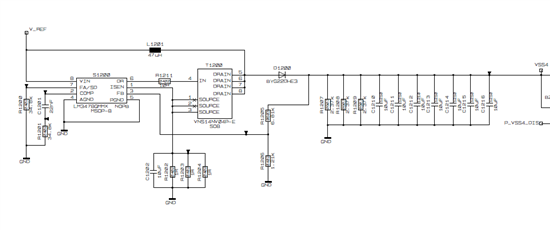Hi all,
I have designed a step up based LM3478. My requirements are:
Vin min: 6.3V
Vin max: 6.7V
Vout = 8.5V
Iout max = 150mA
Because of components availability and limited PCB space I have followings restrictions:
- possible boost inductor values: 10uH / 650mA, 22uH / 450mA or 47uH / 350mA
- Output capacitor value: max. 7x10uF (ceramic cap)
These values deviate from recommended part values by WEBENCH.
If I try to change the values in the WEBENCH then I get the warning that changes may cause instability in my design.
My question is now,
how does look the compensation network if I use the above mentioned values for the boost inductor and output capacitor?
Can anybody help me?
Attached is the Webench design report.
thanks.
Erdal Guel


